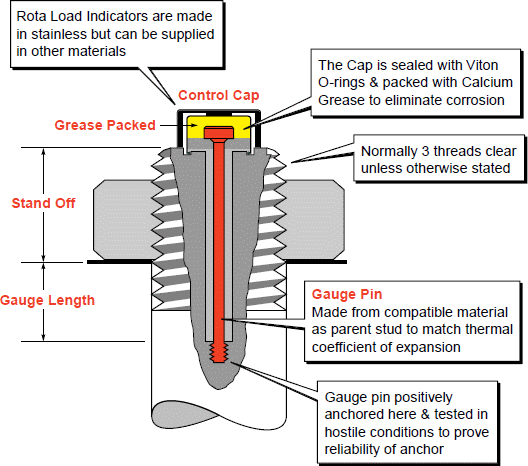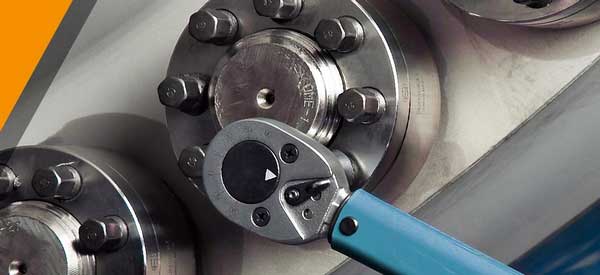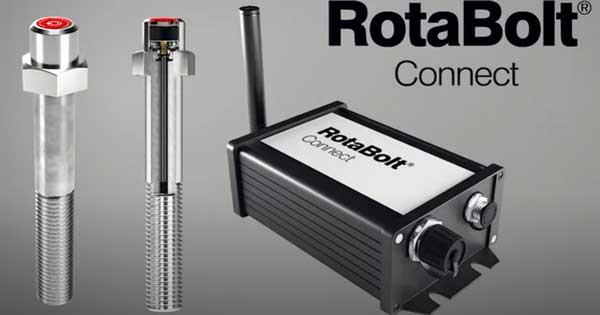What are Rotabolts? |
Rotabolts are Tension Controlled Fasteners and the only practical direct stress/strain measurement technique currently (2022) available on the market.

These bolts can be utilised with any tightening technique to achieve the load, but the key is that the load (strain) is being measured directly to give an indication of bolt tightness.
The bolt consists of a standard industry bolt which is drilled at one end along the axis to accept a headed pin and cap mechanism which acts as a mechanical strain gauge.
The drawing shows the arrangement.. the headed pin is positively anchored to the base of the hole and retains a rotor and cap which is free to spin in a pre-set air gap between the rotor and bolt face.
When tightening takes place, the stud begins to stretch (proportional to load) but the head pin does not, thus the air gap closes as tightening continues to extend the bolt. When the air gap is fully closed, the rotor locks. The pre-set air gap is directly proportional to the bolt extension (strain) and hence the stress in the bolt (and load transferred to the gasket joint).

The user simply turns the cap by finger and thumb while tightening the bolt until the cap locks. Continued tightening is unnecessary and simply over-compresses the gasket and operates the bolt nearer to its yield point. Overextension of the bolt does not damage the strain gauge mechanism since the now locked rotor transfers load to the pin which then starts to extend with the bolt.When the load is removed, the pin returns to its original length along with the bolt (unless it has been overstressed beyond yield).
Every Rotabolt is individually loaded in the factory in order to preset the air gap for the required load. The set load is then stamped on the end of the cap for easy identification.
Rotabolts are, however, much more expensive than standard bolting and should only be used where service duty is severe or previous history of joint leakage justifies. For example, the cost of continually furmaniting a troublesome joint, together with the possible hydrocarbon losses and even unscheduled plant shutdowns, may easily justify the added expense.
How it works - RotaBolt
Remark(s) of the Author...
I applied these bolts, at the request of a customer, at a refinery where I had to do a job, and the final result was positive.
As mentioned earlier in this article, the cost for the bolt is significantly higher, and in my opinion, the assembly time is also longer.
The application of the Rotabolt may have advantages, but the principle cannot convince me.
Craftsmanship, in my opinion, is becoming less and less, and we are going to come up with all kinds of solutions to make the 'current craftsman' think even less.

